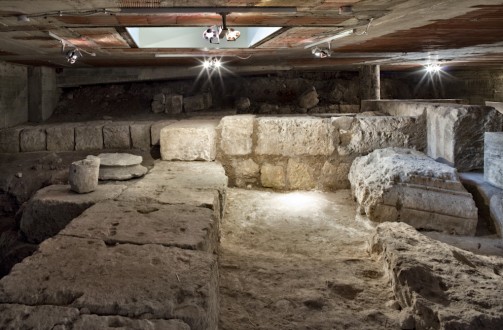The Punico-Roman temple was discovered during construction work at the Orofino Travel Agency at 10 Trento Ave.
The archaeological area constitutes only a portion of a large building that, resting on the rock outcropping occupied the natural slope.
This structure, of Punic-Roman age, possibly dating to the 3rd/2nd century B.C., is of exceptional importance.
A Punic inscription, found in the early twentieth century, in what was called Giardino Birocchi to the west of the excavation area, provides, in an unexpected way, the genealogy of those who carried out the work.
The building, of undoubted grandeur, must have been enriched with architectural elements: bases, columns, remains of cornices and other molded elements, removed in the Roman Republican period (2nd century B.C.) were found during excavations not only votive offerings – statuettes of male and female figures, small feet and legs, but also food offerings contained in small pits dug for the purpose.
Numerous hypotheses have been put forward aimed at explaining the object of worship but, at present, this is still difficult to establish.
Some scholars assert that the votive representations would seem to refer to the religious syncretism of the republican age with a salutary value; in fact, the existence in Cagliari of a temple of Aesculapius is known.
Moreover, it is known that such places of worship were built within the city walls while at the time, the area of Viale Trento, was outside them.
Given the varied offerings found in the storage area, some scholars believe that these votive offerings do not reflect a request for healing for particular limb ailments, but rather take the form of a good omen for departure and return from a journey.
The latter thesis, although not fully supported by the elements present at present, seems the most suggestive in light of the fact that this area now forms the base of the building that houses a major travel agency.









